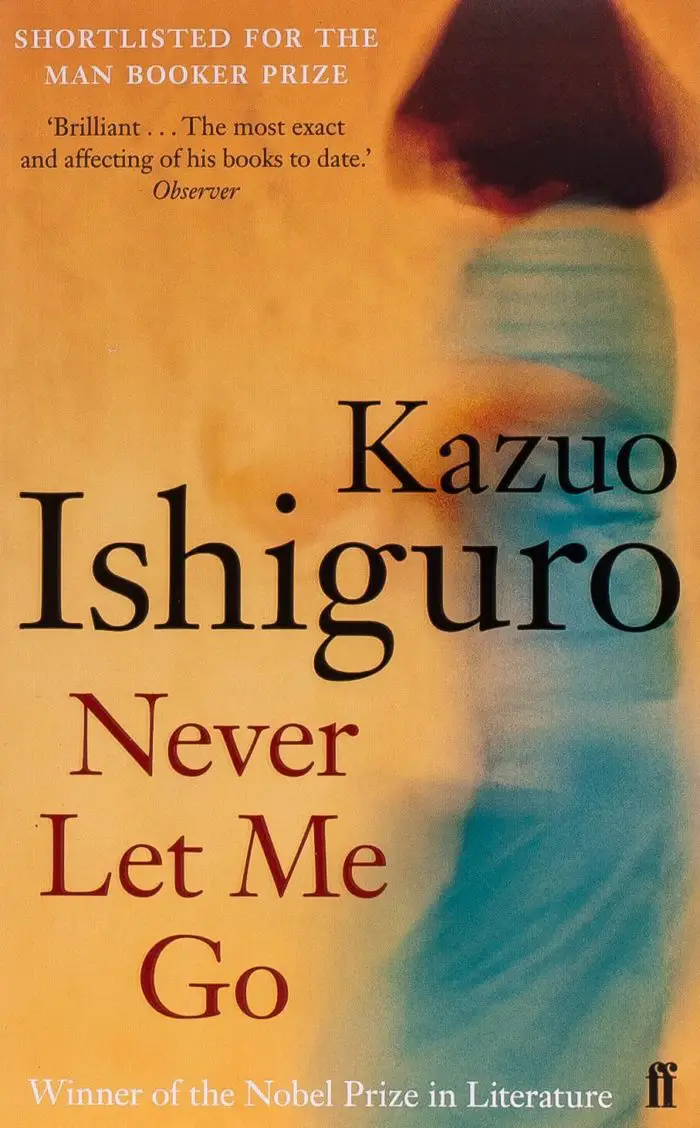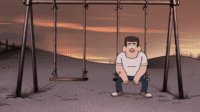Modern readers and audiences often misunderstand and eschew the sheer gravity and capacity for the terror that existential horror brings to the table. It’s a concept of horror that can easily be worked into other genres as well to create an affecting blend of genres. Dystopian and science fiction media love to employ existentialism after all. Horror can be considered a hallmark of genres outside itself because there is often a fear of the unknown, violence, bloodshed, and difficult situations. Award-winning author Kazuo Ishiguro employs existentialist rhetoric in his landmark dystopian sci-fi novel Never Let Me Go in a chilling way that leaves the reader both intrigued and thoroughly horrified. While Never Let Me Go isn’t widely considered a part of the horror canon, its chilling premise, and existential dread imbues the reader with heartbreaking anxiety. It’s horror for the heart and the mind and leaves audiences with deep dogmatic questions relating to their existence.
Never Let Me Go is a story that peels back its own layers to reveal a truly stunning and grotesque storyline. The reader is introduced to the central figure, Kathy H, a woman whose job is a carer. Carers in the world of Never Let Me Go are those who comfort those that are undergoing organ donation. The narrative is told in retrospect as she looks back on the life she has led so far. Kathy’s story starts at Hailsham, which could easily be any idyllic countryside English boarding school. The children are in the care of guardians and are always encouraged to explore their own artistic natures. The art that is created by the children is perused and selected by a woman that the children simply know as Madame. Kathy has a close friendship with a young girl named Ruth and soon develops feelings for a boy named Tommy. One of the guardians — in a fit of conscience — informs the children that they are clones and were made to be organ donors. She reveals to the children that they will never lead natural lives and instead will die from the donations as their organs are parceled out to those in need.
The idea of having a predetermined fate, especially one where your life boils down to being spare parts, would be a lot for even the most mentally well and stalwart person to accept. The children’s existences are tinged with the terror of what will come next. They have no choice but to accept that their lives are inherently free of choice. Their wills have been stripped from them. Their humanity is considered null and void. Despite being a genetic copy of another person, the reader is allowed to see the characters as people themselves. They are witnesses to their inherent humanity and are allowed to revel in the sad reality that every character in this book is destined for organ donation and eventually premature death. Death is a natural occurrence, all must come to accept this, but the idea of people who are specifically brought into this world as biomedical chattel is horrifying. The reader is reasonably uncomfortable with the ethical questions that are laid bare before them. Are clones people? Do they have humanity? Ishiguro gives his readers no easy answers, but he does make it a point to show that, while in the dystopian setting of the novel they are not considered people, they are very much people with interior lives, dreams, and desires.

As the novel progresses, the children become teenagers and move from Hailsham to an establishment simply referred to as the cottages. Uneasy questions and even more devastating answers arise as the core three characters — Kathy, Ruth, and Tommy — mature. Ruth begins a feverish search for a woman that two other teens at the cottage say resembles her. Ruth becomes obsessed with the idea that this is the woman she is cloned from. The three journey to see the woman, but the resemblance to Ruth is paltry and not a true match. Ruth starts to question who was used to clone them and deduces that it must have been those considered “human trash,” the “dregs” of society that the establishment funding this cloning could easily get away with infringing upon. Ruth’s hypothesis is haunting because it makes their existence a compounded human rights violation. It’s highly likely that those that society routinely looks down upon — the poor, the addicted, the criminal, and so on — were exploited in their creation.
While Ruth is preoccupied with her origins, Kathy and Tommy are pondering the reasoning for the art collections at Hailsham as rumors of romantic couples being deferred for donations so that they could have more time together. Tommy deduces that the art was a way for the guardians to learn which students were truly in love with one another. The emphasis on romance and Kathy’s want for romantic connection is heartbreaking because this is yet another existential quandary that plagues humanity. Most people at some point fear the idea of dying alone or choosing the wrong partner since time is achingly finite. It is a fear that has become so commonplace that most people don’t interrogate the crippling terror that lies beneath it. Romantically or not, humans are social creatures and want to believe that they will die surrounded by love.
This fear of loneliness drives Ruth to attempt to quash any feelings Tommy and Kathy have for one another when she learns of Tommy’s theory. It is Ruth’s hateful act that pushes Kathy to become a carer, separating herself from Ruth’s insecurity and her feelings for Tommy. Nearly a decade passes before Ruth and Kathy’s paths cross. When Ruth’s first donation causes her health to rapidly decline, Kathy comes to be her carer. Ruth is aware that her time is short and she only has a small amount of time that she can set things right and rectify her past cruel acts. When faced with the end, Ruth’s introspection pushes her toward the truth that she feared for so long — Tommy and Kathy were meant to be and her jealousy prevented that. Ruth’s entire character is motivated by fear right up until she suggests that she, Kathy, and Tommy take a trip together. It is during this trip that Ruth has to face the truth, her horror, that she has become a selfish and regret-riddled person. She urges Kathy and Tommy to seek the rumored deferment. As a final act of goodwill, she supplies them with Madame’s address. Ruth dies upon her second donation shortly after.

Kathy naturally transitions to caring for Tommy upon Ruth’s death. The two start a relationship, and when Tommy is preparing for his fourth donation, they decide to reach out to Madame and seek deferment so they can have more time together. With them, they take Tommy’s artwork to show as proof of the depth of their devotion. Upon visiting Madame, they learn that the artwork was used to show the outside world that the children, the clones, were human and had human souls and inner lives. The experiment failed and, as a result, Hailsham was closed. Hailsham was meant to give the children a humane childhood before they faced the inevitable. They wanted to minimize the trauma that the children would face as a result of their status as future organ donors. As the reader has come to expect, there are no deferrals. Kathy and Tommy have come to beg a god, a figurehead with no power here in this universe. There is no stopping the inexorable events that are to come. It’s haunting to learn that the characters’ final hope for happiness is lost, that sometimes even in the face of death love is not enough to stop it.
As a result, Tommy questions Kathy’s role as a carer, which she soon resigns from. Upon her resignation, she continues to visit Tommy. The next donation kills Tommy. Tommy’s death inspires Kathy with a shock of introspection, musing on the fact that everyone must die and perhaps no one feels like they’ve received enough time. Kathy’s resolution to her fate is harrowing, the last lines about death imprinted upon the readers’ psyche. Some of the true horrors of the novel result after it has ended with the questions it engenders in the reader about time, love, connection, art, trauma, and death. To live is to rage against death, but in the end, that is never enough. Death is the great equalizer, both beautiful and terrible.
The ethical questions that Ishiguro poses in his novel have real-world issues behind them. With topics of medical ethics involving cloning and the phenomenon of “savior siblings,” children expressly conceived to provide organ donation to an elder sibling, Ishiguro forces the reader to look at the horror that comes with the reality of these pertinent facets of existence humanity has come to face with. Real violations of humanity and the hypotheticals of what evils could be wrought in the name of science and medicine fuel the terror of Never Let Me Go.

Horror — like the stark inevitability of death — is everywhere. This is well known and recognized, but some of the most bone-chilling and horrific fright can come from media that is not inherently considered horror. Pondering death and existence is a squeamish and nerve-wracking undertaking. Kazuo Ishiguro pushes the reader into the heart of existential woe and dread with Never Let Me Go. There are no easy answers and sometimes the questions that arise are even more troubling when it comes to real-world ethical dilemmas.


